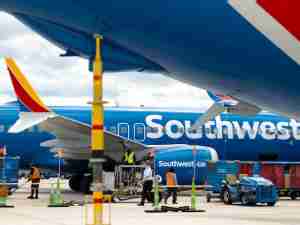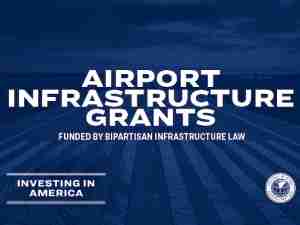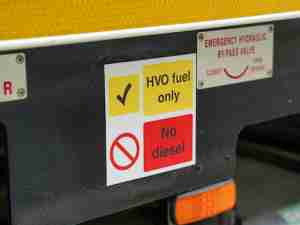Southwest Airlines Co. executives are pushing back against a rising chorus of analysts who say the company’s days as the airline industry’s disruptive force are over, reined in by higher wages and tougher operational challenges.
The carrier known for its no-frills aesthetic and competitive prices is under pressure because its model is being put to the test, 50 years after its first commercial flight. Southwest increased starting pay to $15 an hour in August, and may have to go higher in some parts of the country to meet goals to hire thousands of workers, Chief Executive Officer Gary Kelly and his executive team said in an interview Friday.
They also signaled their more cautious approach to rebuilding flight capacity—adopted after a more aggressive plan backfired this year—is likely to last well into 2022.
Those forces have weighed on Southwest’s stock, the worst performing of major U.S. airlines this year. And some analysts are skeptical that the company can regain the profitability and efficiency that once made it the industry darling. Goldman Sachs, UBS and Jefferies downgraded the shares after Southwest’s investor day this week, with Jefferies analyst Sheila Kahyaoglu calling it “no longer the low-cost carrier” in a research note.
The analyst “is wrong—absolutely dead wrong,” Kelly said. “They are missing the point that we are perfectly positioned for the environment.”
Reached via email, Kahyaoglu didn’t address Kelly’s remarks but referred back to her report.
Kelly, who will become executive chairman on Feb. 1, and Bob Jordan, who will take over as CEO, outlined a plan to fill 5,000 jobs this year and 8,000 in 2022. That would help replenish a workforce depleted by 4,500 voluntary departures during the pandemic. This year’s hot job market has pitted Dallas-based Southwest against Amazon.com, UPS and numerous other employers all vying for the same pool of entry-level workers.
Patience Required
If Southwest can get those people hired, it can offer more flights to meet growing demand, especially for an expected rebound in business travel. All the other airlines are also having to pay up for talent, but Kelly and Jordan reason that the competition can’t keep up with Southwest’s ability to squeeze costs out of the system, especially when it’s operating at full capacity.
By that logic, investors just need to show a little patience while Southwest completes its hiring and gets back to full steam. The airline trimmed capacity this quarter to 8% below the same period in 2019. In the first quarter of 2022, that deficit will shrink to 6%. That’s a change from Southwest’s plans earlier in the year, when capacity was supposed to be similar to 2019 levels by this point.
For all of 2022, capacity will be down as much as 3% or up as much as 2%, the company forecasts. That implies gradual improvement over the course of the year. Recent agreements to let corporate travel departments book flights on Southwest more easily will also boost demand, and the company has new tools on the way to optimize prices, executives said.
The company expects to be profitable this quarter and all of next year, and it’s eyeing a restoration of dividends and potentially share buybacks in 2023. New deliveries of Boeing Co.’s 737 Max will provide more seats and better fuel efficiency than the aircraft they are replacing.
“It’s a rebuilding year again in 2022,” Jordan said. “We need to grow the airline back into the efficiency we had pre-pandemic, which we will do. It’s going to take some time to wring those costs out.”
Thus far, investors aren’t buying into the narrative. Southwest shares fell 10% this year through last week, the worst performance in the Standard & Poor’s 500 Airlines index. The airline is projecting that unit costs, an industry gauge of efficiency, will rise as much as 12% in 2022 compared with 2019.
The company’s shares fell less than 1% to $41.64 at 9:33 a.m. in New York on Monday.
“The cost headwinds are real and the long-term guidance seems to be implying a permanent change rather than transitory ones at Southwest,” MKM Partners analyst Conor Cunningham said in a note, although he maintained a recommendation to buy the shares, as most analysts who cover Southwest still do.
Costs tied to labor, which vies with fuel as the top two expenses for airlines, could rise further as competition for workers is forcing the carrier to consider raising its starting hourly wage for a second time, since the initial bump to $15 on Aug. 1. For some professional roles, Southwest is having to do “recruitment marketing” for open positions—a change for a company that’s accustomed to being flooded with resumes, said Linda Rutherford, who leads the human resources department.
Too Quick
Then there’s the unpredictable nature of the pandemic. Southwest cut its flying schedule for the final four months of this year after employees assailed the discount carrier for understaffing operations during a summer marred by delays and cancellations. Southwest later acknowledged it had ramped up flights too quickly based on surprisingly strong demand for travel from consumers tired of coronavirus lockdowns.
Southwest sees corporate travel recovery reaching 60% of 2019 levels by the end of this year, and Kelly has said he expects that some portion may never return. But its path back to pre-pandemic efficiency relies in part on high-frequency flights on well-worn business routes.
“If it doesn’t get back to where it needs to be on the business side, does the airline ever reset itself successfully?” Cunningham of MKM Research asked in an interview.
Kelly said Southwest’s plans account for the possibility of future waves of Covid-19 infections, and that its deliberate approach to restoring capacity will keep it from repeating last summer’s missteps.
“It’s just been a messy period,” said Kelly, who has led the company since 2004. “We have some convincing to do, which we’re used to.”









